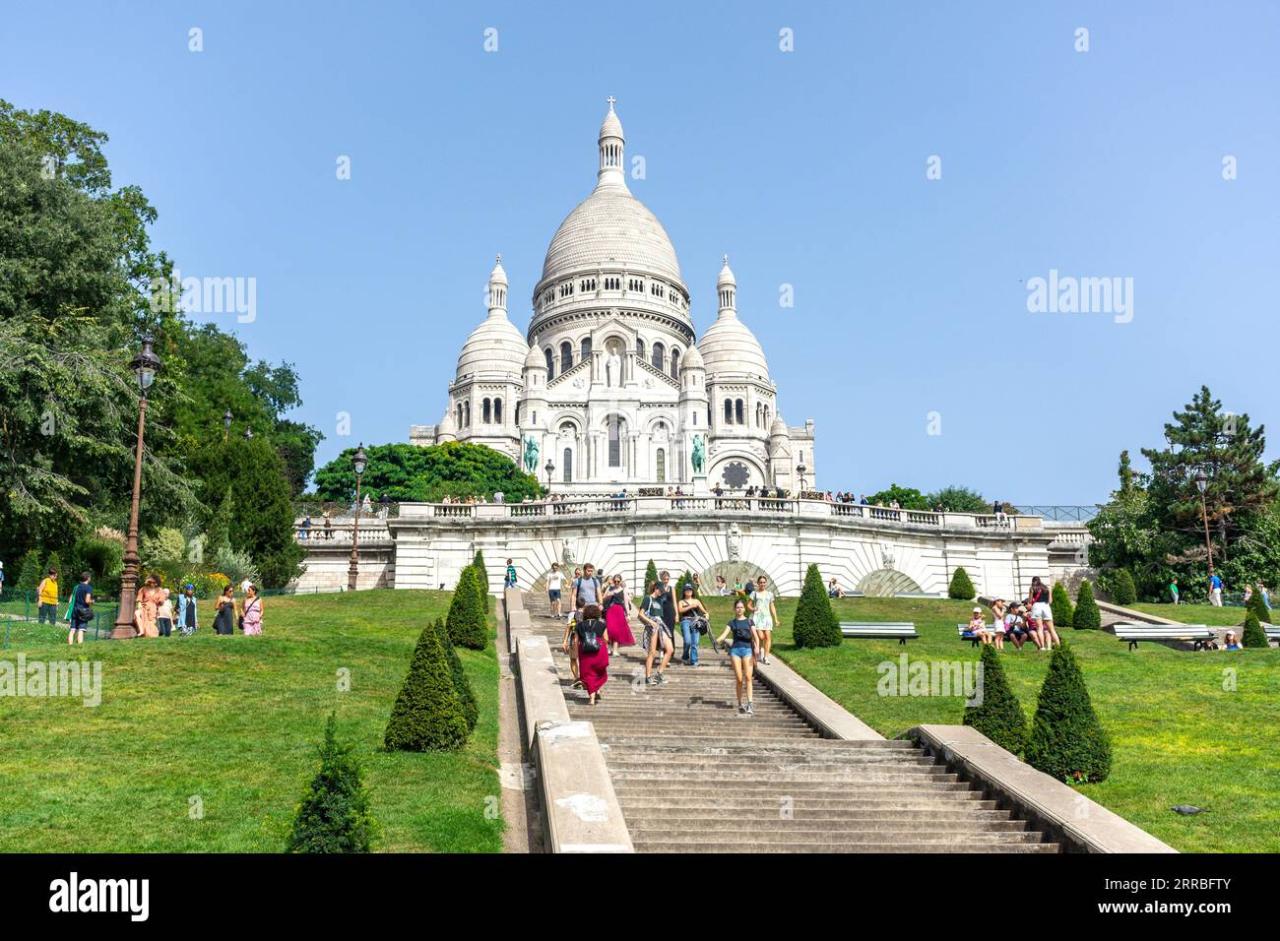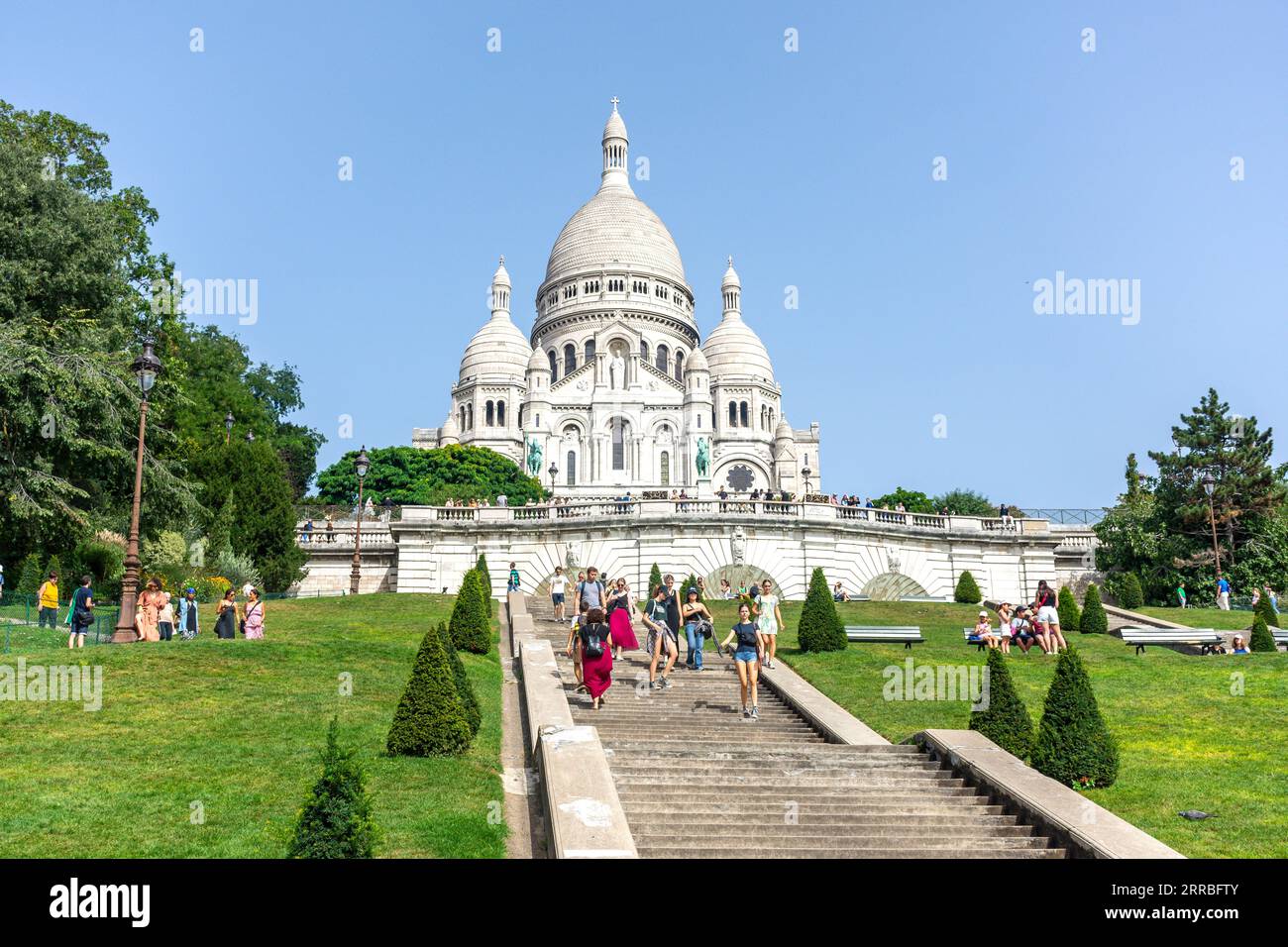Nestled beneath the iconic Sacré-Cœur Basilica, which crowns the summit of Montmartre in Paris, lies a hidden world of profound spiritual significance: the Crypt. While the Basilica itself draws millions of visitors with its breathtaking architecture and panoramic views, the Crypt offers a more contemplative and intimate experience, revealing a lesser-known facet of this sacred space.
A Foundation of Faith: The Basilica’s Genesis
To understand the Crypt, it’s essential to grasp the context of the Basilica’s construction. The late 19th century was a period of deep political and social turmoil in France. The Franco-Prussian War (1870-1871) had left the nation devastated, and the subsequent Paris Commune was a bloody and divisive episode. In this atmosphere of national trauma, the idea for the Sacré-Cœur Basilica was conceived.
The Basilica was envisioned as a votive offering, a symbol of repentance and hope for the nation. Alexandre Legentil and Hubert Rohault de Fleury, prominent figures in Parisian society, were instrumental in promoting the idea. They believed that France’s misfortunes were a result of its moral decline and that a grand church dedicated to the Sacred Heart of Jesus would help to restore the nation’s spiritual health.
The project received official approval from the National Assembly in 1873, and construction began in 1875, lasting for nearly half a century. The Basilica’s design, entrusted to architect Paul Abadie, was a blend of Romanesque and Byzantine styles, creating a distinctive and imposing structure that would dominate the Parisian skyline.
The Crypt: A Subterranean Marvel
As the Basilica rose on Montmartre, the plans included a substantial Crypt beneath the main church. The Crypt serves several important functions:
- Structural Support: Given the instability of the Montmartre hill, the Crypt provides a solid foundation for the massive Basilica above.
- Symbolic Resonance: The Crypt is more than just a structural element; it is a place of profound spiritual significance. It echoes the theological concept of the Church as both visible (the Basilica) and invisible (the Crypt), representing the union of the earthly and the divine.
- A Space for Prayer and Remembrance: The Crypt is a place for quiet contemplation, prayer, and remembrance. It contains chapels dedicated to various saints and events, providing spaces for pilgrims and visitors to connect with their faith.
Architectural Features and Symbolic Elements
The Crypt’s architecture mirrors the Romanesque and Byzantine styles of the Basilica above, but on a more intimate and somber scale. Key features include:
- Low Vaulted Ceilings: The ceilings are intentionally lower than those in the Basilica, creating a sense of enclosure and intimacy.
- Massive Pillars: The Crypt is supported by numerous thick pillars, each adorned with intricate carvings and reliefs. These pillars symbolize the strength and stability of the Church.
- Chapels and Altars: The Crypt houses several chapels, each dedicated to a specific saint or event in Christian history. These chapels provide focal points for prayer and devotion.
- Statues and Sculptures: The Crypt is adorned with statues and sculptures that depict scenes from the Bible and the lives of the saints. These artworks serve as visual aids for meditation and reflection.
- The Tomb of Cardinal Guibert: The Crypt houses the tomb of Cardinal Guibert, the Archbishop of Paris who was instrumental in the Basilica’s construction. His presence in the Crypt serves as a reminder of the dedication and vision that went into creating this sacred space.
Specific Chapels and Their Significance
Several chapels within the Crypt hold particular significance:
- The Chapel of the Pieta: This chapel features a moving sculpture of the Virgin Mary cradling the body of Jesus after the crucifixion. It is a place for grieving and seeking solace in times of suffering.
- The Chapel of Saint Joseph: Saint Joseph, the foster father of Jesus, is revered as a protector and provider. This chapel is a place to pray for family, work, and material needs.
- The Chapel of the Sacred Heart: This chapel is dedicated to the Sacred Heart of Jesus, the central focus of the Basilica’s devotion. It is a place to contemplate the love and mercy of Christ.
- The Chapel of the Apparitions: This chapel commemorates the apparitions of Jesus to Saint Margaret Mary Alacoque, which led to the widespread devotion to the Sacred Heart.
The Crypt’s Role in Remembrance and Reconciliation
Beyond its architectural and spiritual significance, the Crypt also serves as a place of remembrance and reconciliation. The Basilica, as a whole, was conceived as a way to atone for the sins of the nation and to promote healing after a period of great division. The Crypt, with its atmosphere of solemnity and introspection, reinforces this mission.
Visitors to the Crypt often reflect on the events of the past and pray for peace and unity in the present. The chapels dedicated to specific saints and events provide opportunities to connect with the history of the Church and to find inspiration in the lives of those who have gone before.
Visiting the Crypt: A Journey of Discovery
While the Sacré-Cœur Basilica is a popular tourist destination, the Crypt remains a relatively hidden gem. Many visitors are unaware of its existence or do not take the time to explore it. However, for those who do venture beneath the Basilica, the Crypt offers a unique and rewarding experience.
To visit the Crypt, you typically need to purchase a separate ticket. The entrance is located outside the Basilica, on the left side as you face the main entrance. Once inside, you can wander through the various chapels, admire the artwork, and soak in the atmosphere of quiet contemplation.
Tips for Visiting the Crypt
- Allow Sufficient Time: Plan to spend at least an hour exploring the Crypt to fully appreciate its features and significance.
- Dress Respectfully: As a sacred space, it is important to dress modestly when visiting the Crypt.
- Maintain Silence: The Crypt is a place for prayer and reflection, so it is important to maintain a respectful silence.
- Read the Information Panels: Informational panels are available in multiple languages, providing context and details about the Crypt’s history and significance.
- Attend a Service: If possible, consider attending a Mass or prayer service in the Crypt to experience its spiritual atmosphere more fully.
The Crypt Today: A Continuing Legacy
The Crypt of the Sacré-Cœur Basilica continues to serve as a vital part of the Basilica’s mission. It is a place where pilgrims and visitors can connect with their faith, remember the past, and pray for the future. As a subterranean sanctuary of faith and remembrance, the Crypt offers a profound and meaningful experience that complements the grandeur of the Basilica above. It stands as a testament to the enduring power of faith and the importance of seeking reconciliation and healing in a world often marked by division and conflict.


